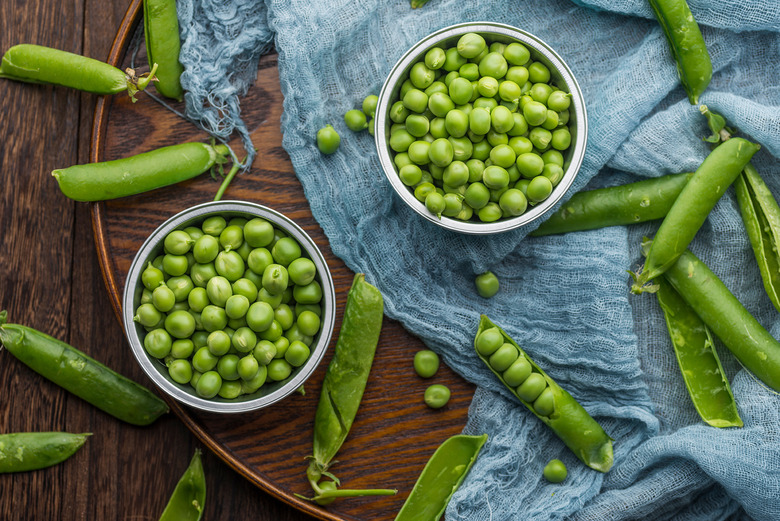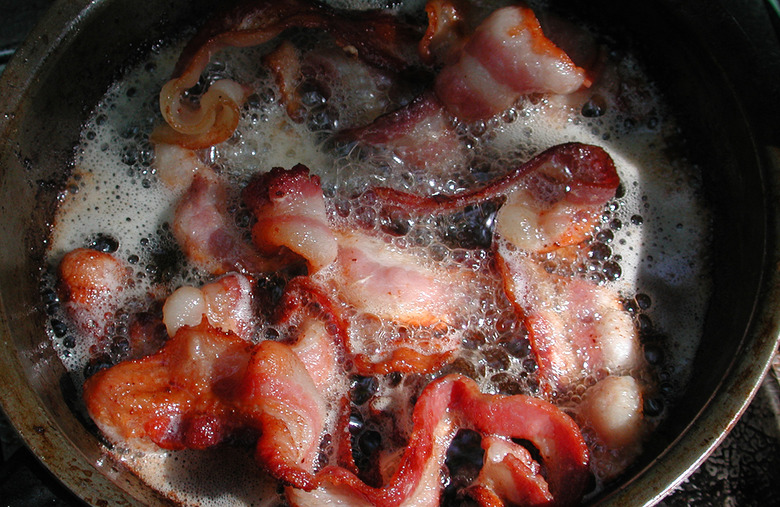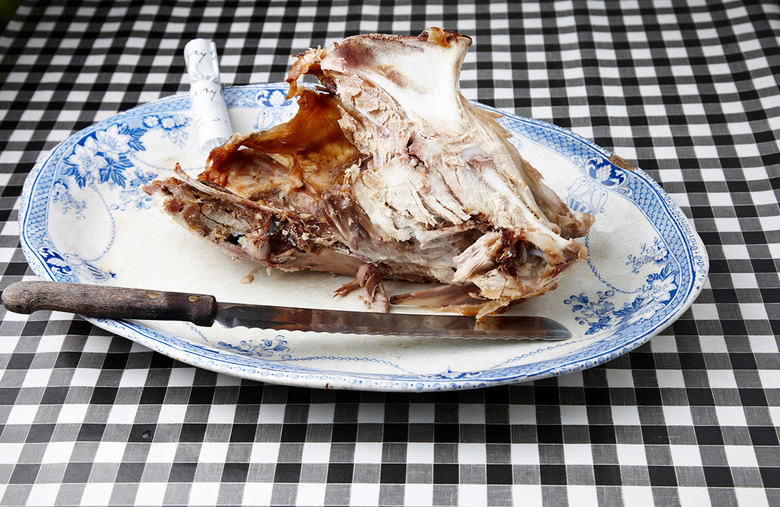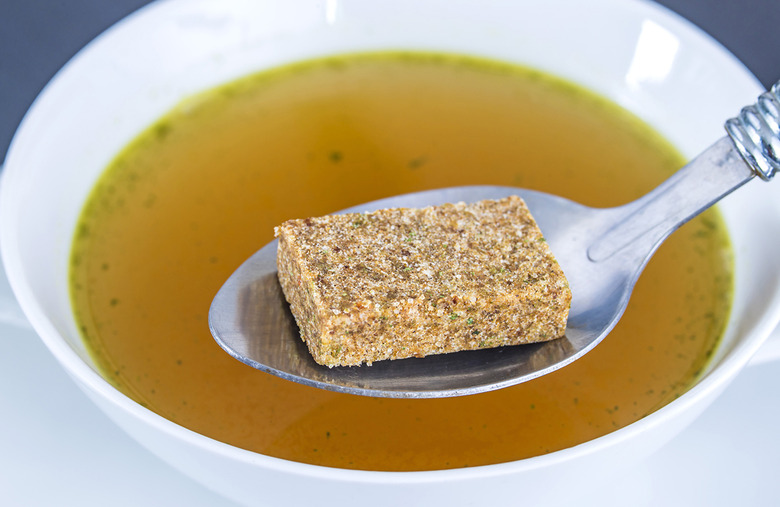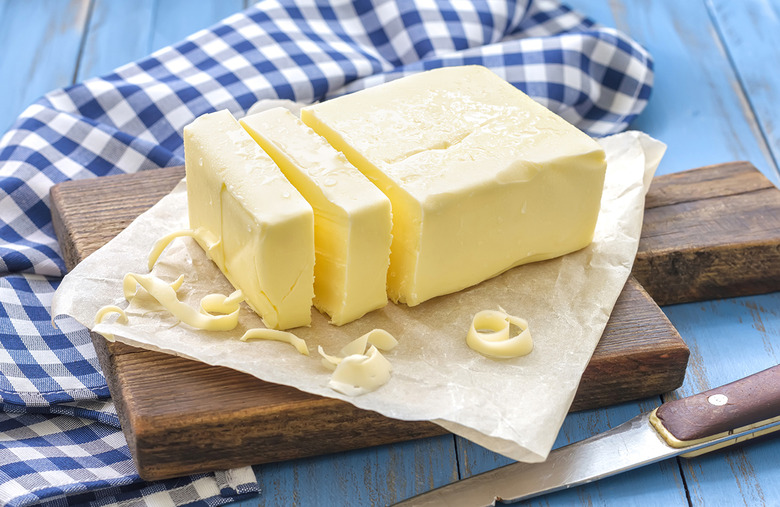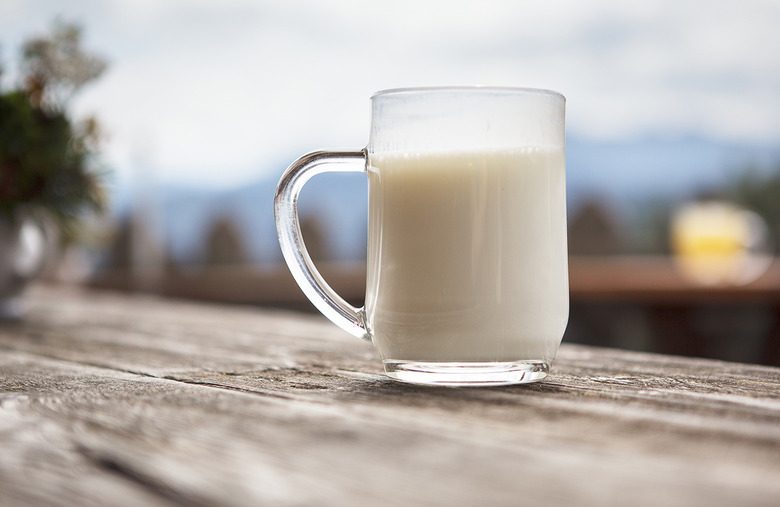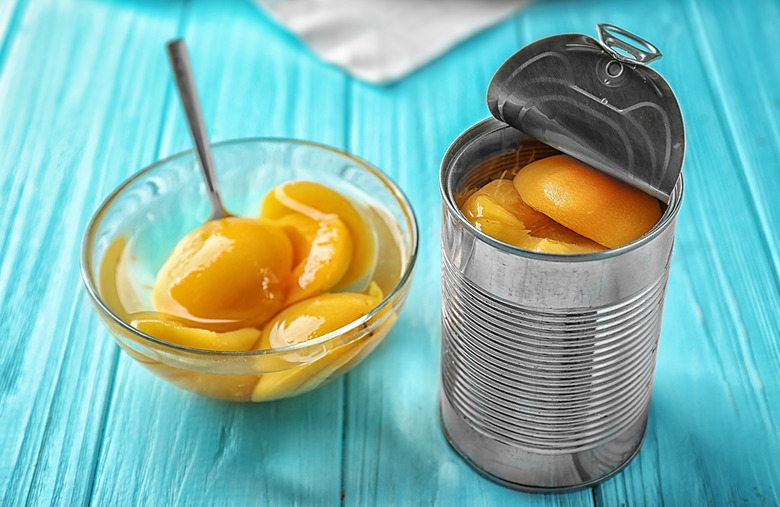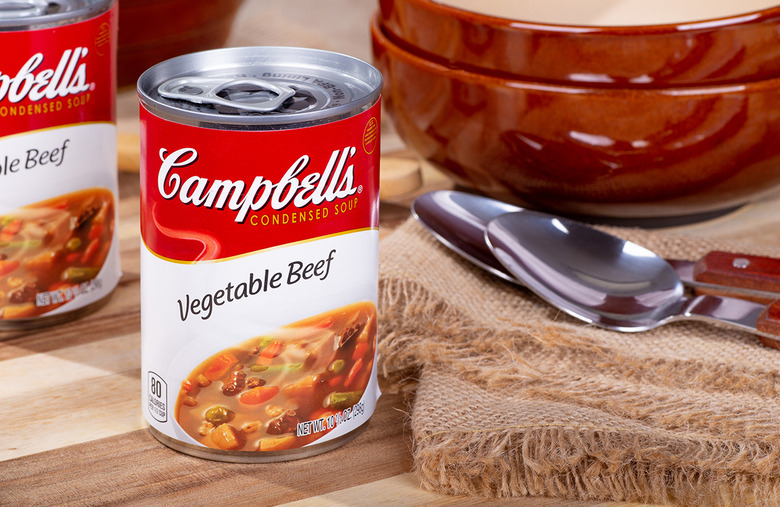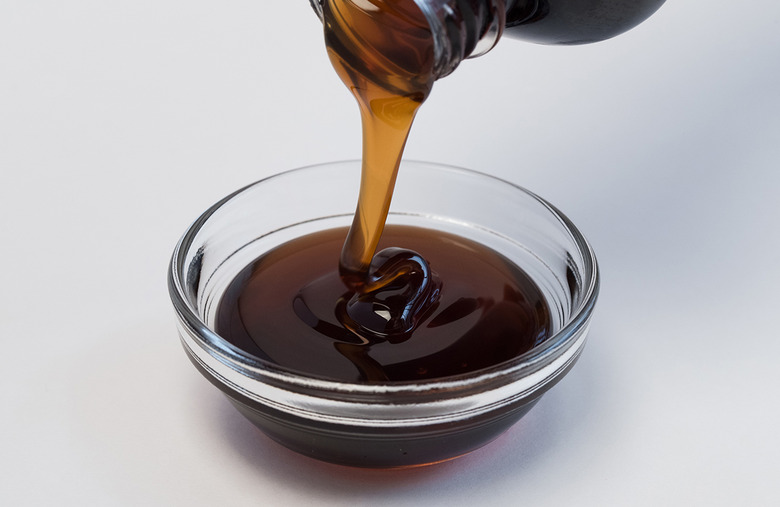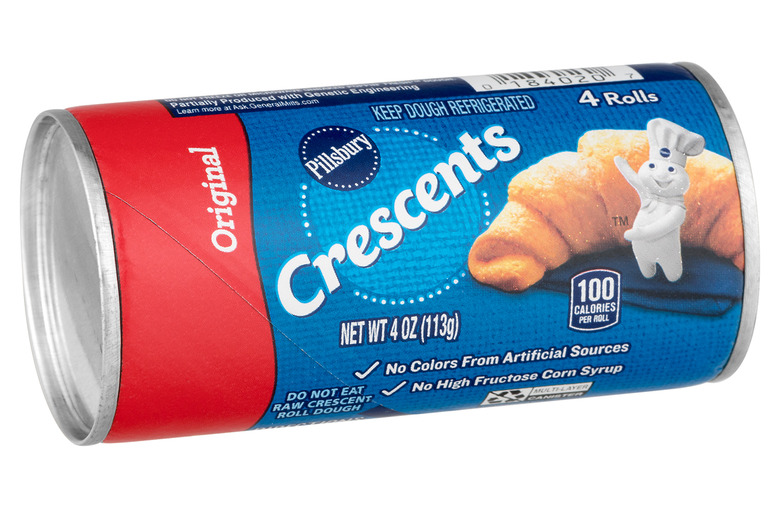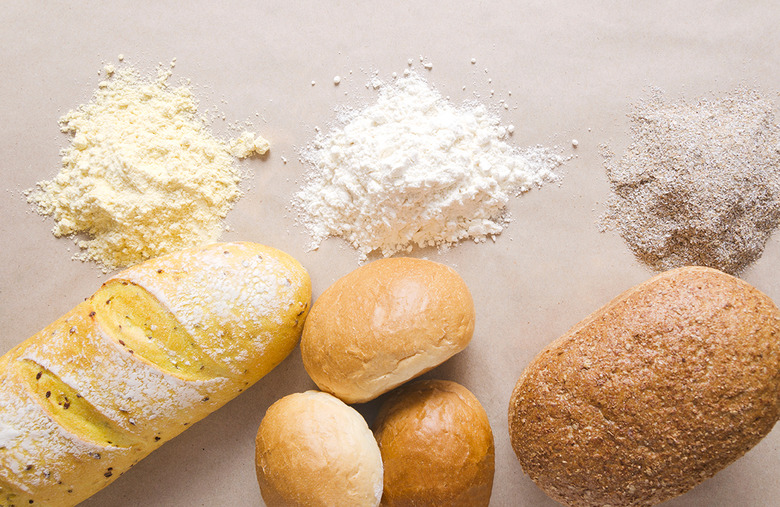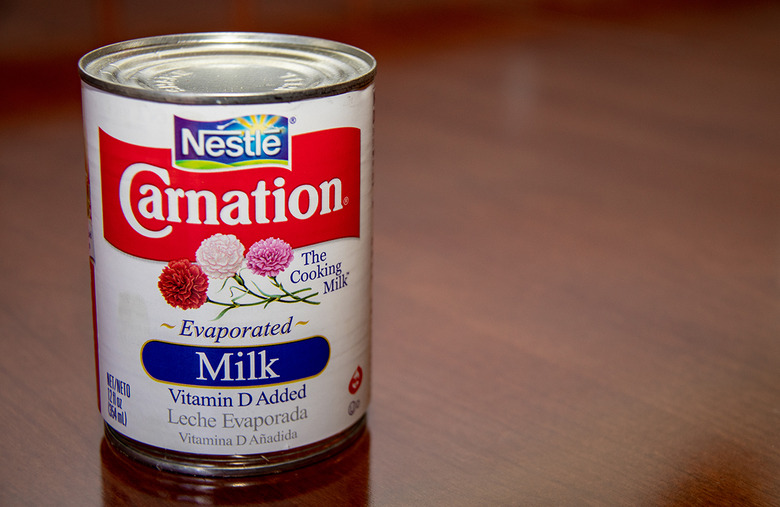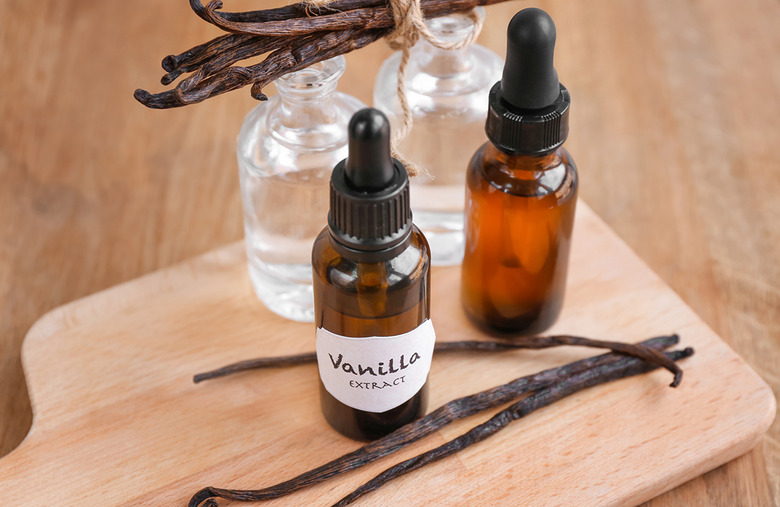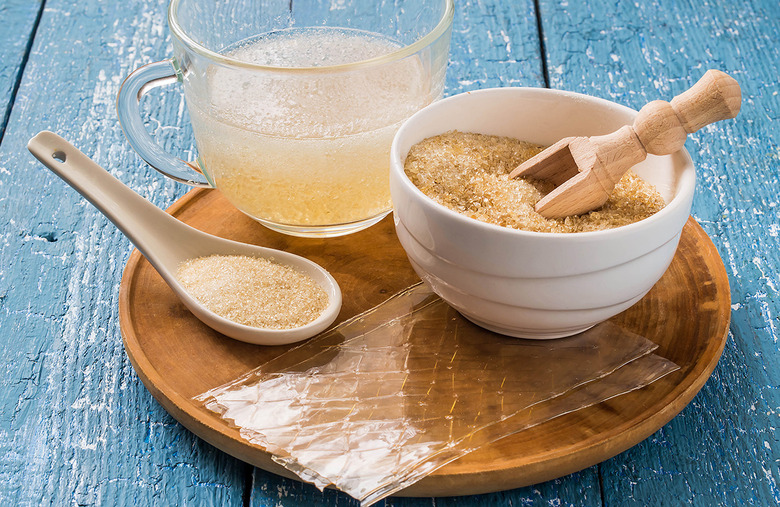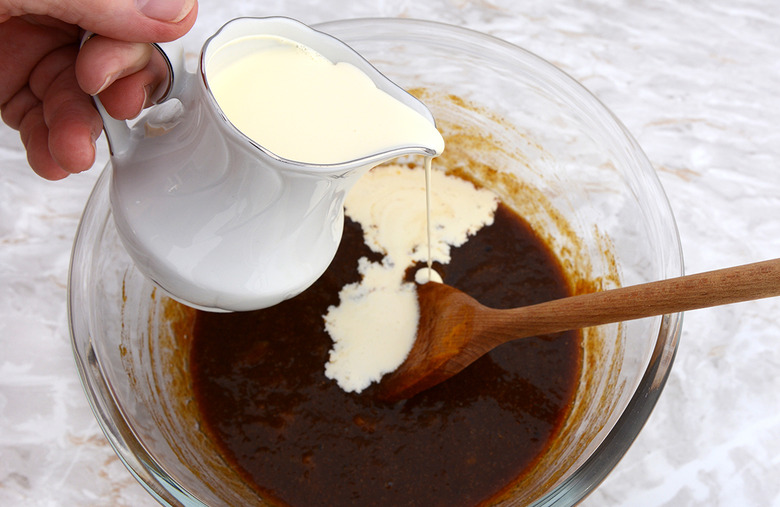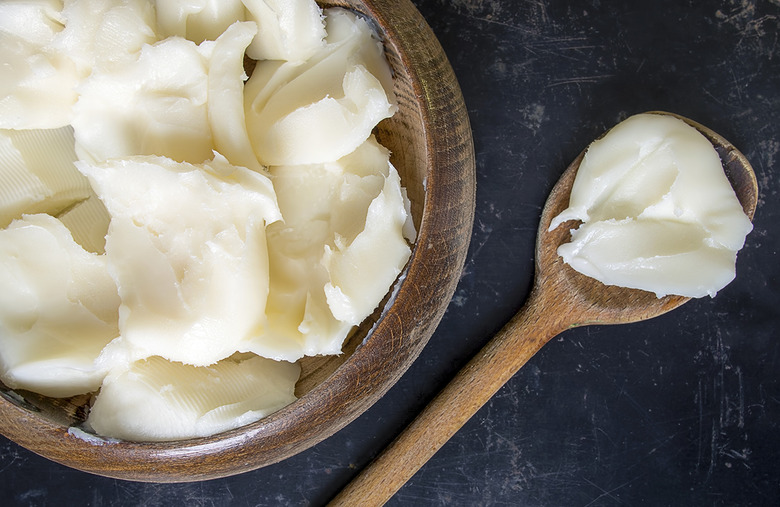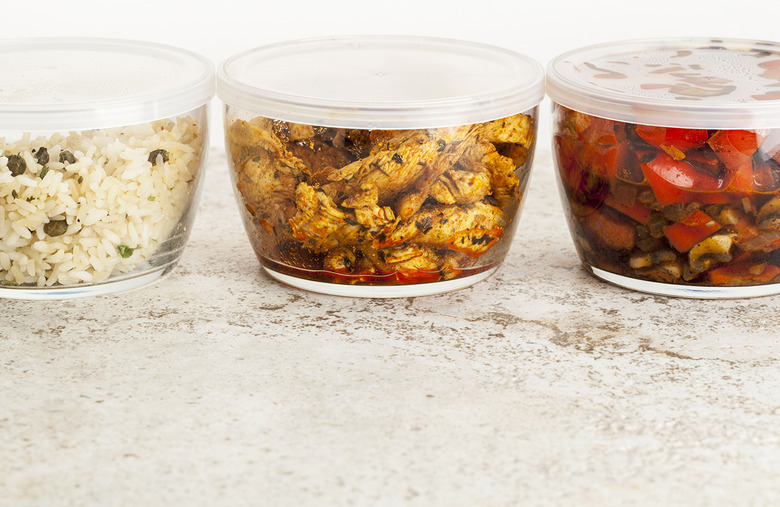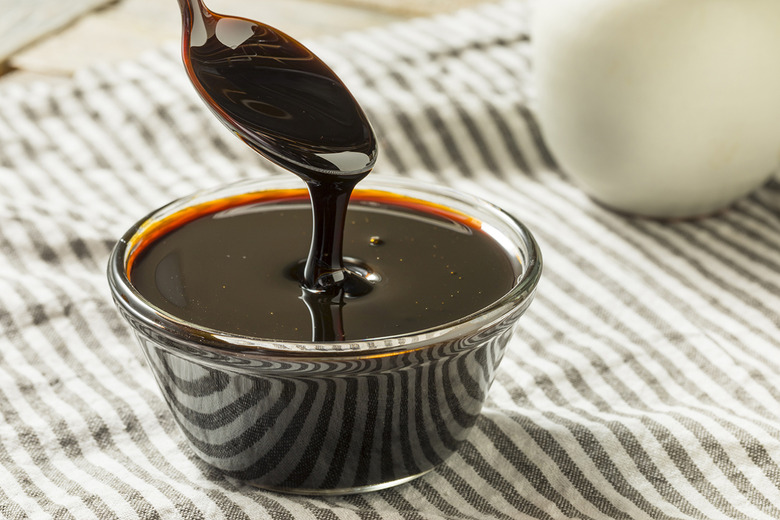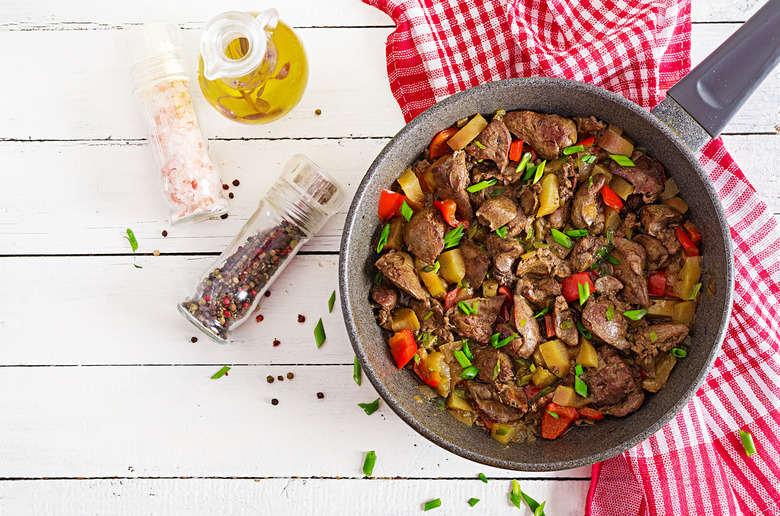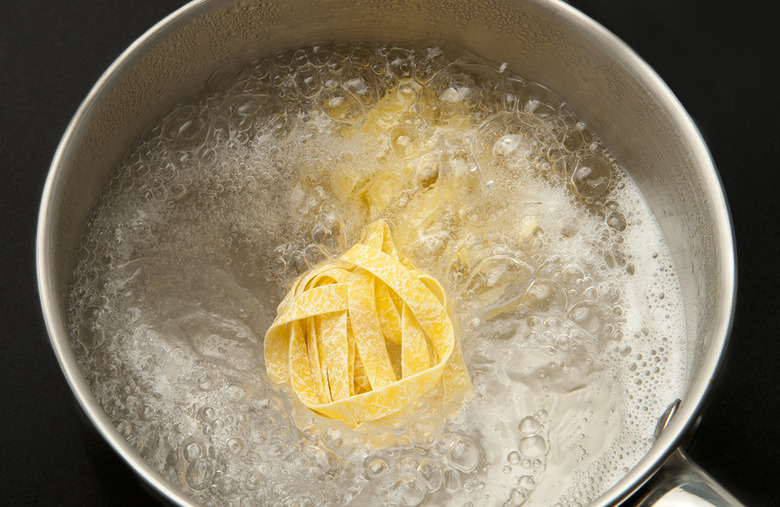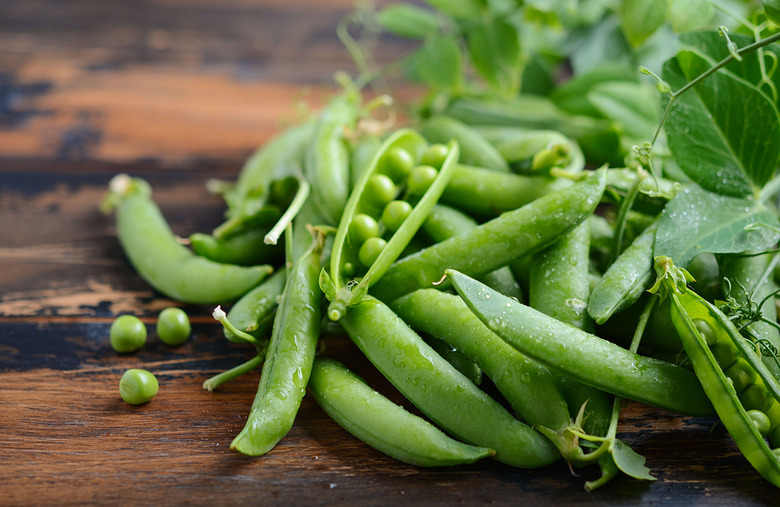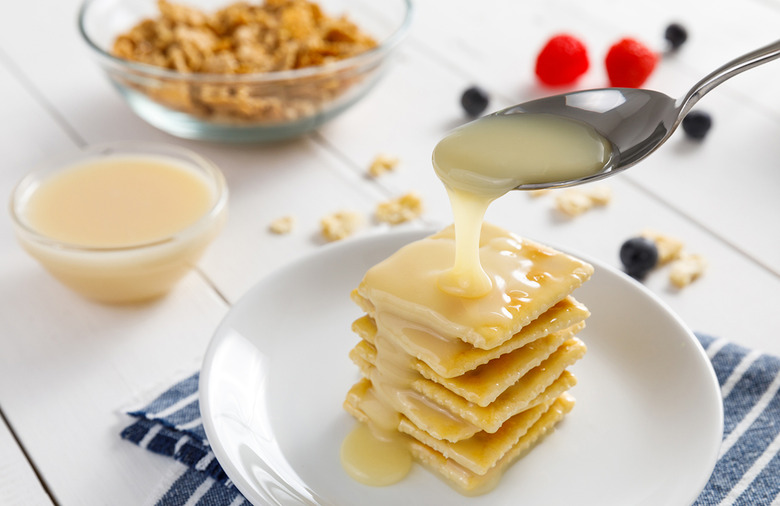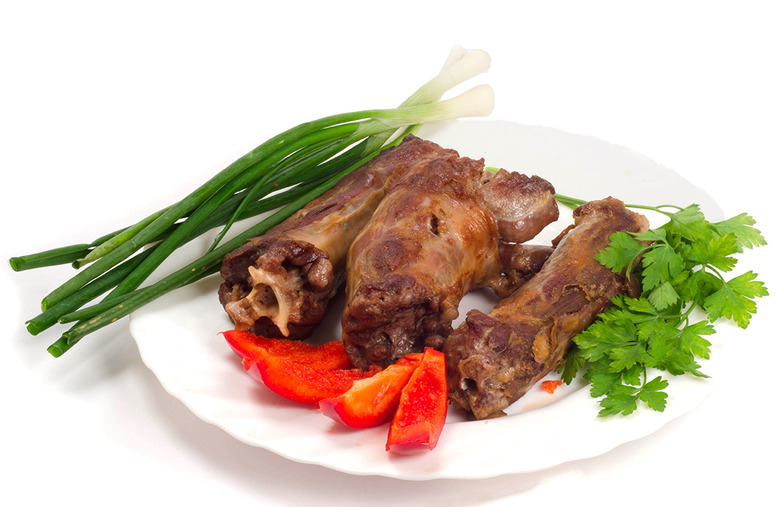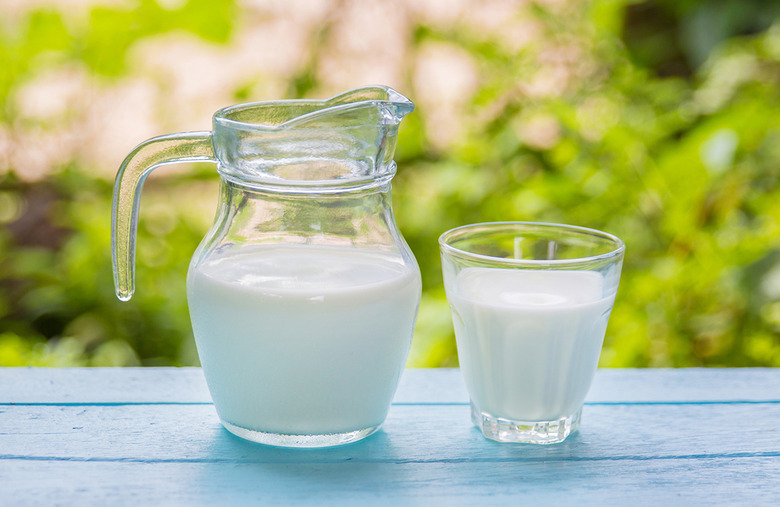25 Ingredients Nobody Cooks With Anymore — But Should
Think of what dinner was like at home 50 years ago. Not only did you gather around the table with mom, dad, brother and sister without the distractions of iPhones and tablets, but you also had different food on your plate. When was the last time you had turkey tetrazzini? Even American staples like eggs, pancakes, pasta and gravy were made differently back in the day using old-school ingredients such as buttermilk, lard and molasses. Here are just a few vintage kitchen staples you don't see much of anymore, but should consider cooking with again.
Bacon grease
Everyone knows bacon is delicious, but few people know what to do with all the grease that comes with frying up a pan of this smoky pork product anymore. Back in the day, home cooks knew to pour the bacon grease into a little jar and keep it handy. Using this grease instead of butter or oil to fry potatoes, onions, eggs or grilled cheese (or to add to popcorn) adds a smoky, rich flavor that is devilishly delicious.
Bones
When serving an entire ham for a family dinner or turkey for Thanksgiving, don't throw out the bones! Making your own stock is easier than you think. Whenever you're left with bones after dinner, be they chicken, turkey, fish or beef ribs, freeze them. Then take those bones and simmer them all together with some vegetable scraps and other seasonings, and you'll make a stock that's better than anything you can buy at the grocery store.
Bouillon cubes
Remember those powdered cubes of bouillon your mom would use to make chicken broth in a pinch? As it turns out, those potent seasoned squares can serve numerous purposes. While high in sodium and not particularly nutritious, bouillon cubes can add tons of flavor to simple, staple side dishes like mashed potatoes or rice, and take gravies from bland to bold. It's also a close relative of beef and chicken base, a mysterious ingredient that restaurant chefs swear by.
Butter
OK, yes, people are still cooking with butter, but they're not using nearly enough of it. While not exactly amazing for your arteries, butter is full of flavor, especially when allowed to brown in the pan a little. A fried egg cooked in a little pat of butter will be much more delicious than that same egg fried using nonstick cooking spray. Not being afraid of using butter for flavor is just one of the cooking tips we learned from our parents.
Buttermilk
Thicker and tangier than standard milk, buttermilk is a classic ingredient in some of the best Southern recipes. Though this dairy product has fallen out of favor north of the Mason-Dixon, it has a few advantages over normal milk. For one, buttermilk keeps longer than normal milk and can be frozen. So, buy a gallon and use it to make some of the best fried chicken, biscuits or pancakes you'll ever have.
Canned fruit
There are a lot of childhood desserts you probably forgot about, and one of the absolute classics was a simple bowl of canned fruit. You know the kind: those sweet, soft pears soaked in a sugary syrup or that baffling fruit cocktail that is basically irresistible. When fresh fruit isn't in season, consider using canned fruit in your cooking instead. Mandarin oranges make a great addition to Asian-inspired salads, canned pears can be baked into tarts, and canned pineapple can be used for cocktails, desserts or even pizza.
Chicken fat
Chicken fat is the secret to great Jewish cooking, and this inexpensive ingredient can make anything from biscuits to potatoes to stuffing instantly better. If you're looking to add a rich, savory flavor to any side dish, look no further than chicken fat.
Condensed soups
The absolute best casserole recipes start with condensed soups. Midwestern moms know that. Look no further than the classic, canned green bean casserole from Thanksgiving for proof of the power of Campbell's condensed mushroom soup. Cream of chicken soup can also be a base for a number of dishes, including easy chicken enchiladas or a cheesy chicken bake.
Corn syrup
Corn syrup has a scary reputation these days because of the high calorie content, but this old-school pantry staple is still a must-have ingredient for a few favorite retro dishes. Corn syrup is an integral ingredient in pecan pie, for instance. This super-sweet liquid is also good to use in no-bake cookies, frosting and homemade caramels.
Crescent rolls
Crescent rolls are not fancy, but they are the basis for a lot of quick and easy appetizers that you may have forgotten about. Baked brie, anyone? You can also use this canned dough for easy pigs in a blanket, jalapeño poppers or as a savory, buttery pie crust.
Different kinds of flour
All-purpose flour rules American grocery store aisles, but did you know there are flours with distinctive purposes? There are different types of flour made for cakes, pastries, pasta, pizza and bread in addition to whole-wheat flour and self-rising flour. The difference is the amount of protein in the flour, which makes for tougher or lighter baked goods. While all-purpose flour will usually get the trick done, if you're trying to make the best possible cakes or wow your family with your homemade bread, you should reconsider. Knowing the difference between specific kinds of flour is just one of the hacks amateur bakers need to know.
Evaporated milk
Evaporated milk is a thicker, shelf-stable milk product that has about 60 percent less water than normal milk, and it's a star in the dessert world. Use this ingredient for classic pumpkin pie, a caramel sauce or a rich, chocolaty fudge. Just don't get it confused with sweetened condensed milk, which is a whole different ingredient altogether (more on that later).
Extracts
Extracts, like vanilla extract, almond extract and orange extract, are concentrated tinctures made from various herbs, nuts, fruits and spices. Today, these faux flavors are occasionally replaced by more "real" ingredients like vanilla beans and orange rinds, but bakers know that extracts can be extremely useful. Using these flavorings leads to a more consistent finished product, as well as cakes that are way better than anything from a box.
Gelatin
There were a lot of gelatin-based dishes in the 1950s and '60s, but people today scream internally at the thought of a lamb chop encased in a clear jelly. Gelatin is a home cook's best friend, however; sheets or packets of unflavored gelatin can help thicken soups and sauces and give them a richer mouthfeel. This ingredient also has some sweet uses, including in smoothies, homemade gummies, and yes, Jell-O molds.
Heavy cream
It's so, so easy to just buy a can of whipped cream to top your favorite slice of pie or an ice cream sundae, but back in the day, you had to make this creamy yet light topping at home by whipping heavy cream to stiff peaks. Heavy cream is also an essential ingredient in creamy soups and rich sauces, and its high fat content keeps it from curdling like whole milk would in acidic environments, like vodka sauce.
Lard
Ever wonder why your food doesn't taste as good as Grandma's? Well, it's because she wasn't afraid of a little pork fat. Think about it: Your granny's pie crust was flaky, tender and moist, and that is because she used pure lard instead of vegetable shortening or even butter. While it may seem scary to use animal fat in your cooking, there are actually a lot of reasons why you should eat more fat.
Leftovers
It can be hard to know how to tell if your leftovers are still good, and it's really easy to just throw away that uneaten chicken thigh or slightly overripe fruit. Instead, know how to use Saturday's leftovers for an easy Sunday meal. Toss those veggie scraps with some olive oil, garlic and pasta — and voila! You have a quick yet healthy dinner.
Lemon pepper
If you're cleaning out your spice drawer, consider using some of that empty space for lemon pepper. This retro ingredient is exactly what it sounds like: dehydrated lemon peel and black pepper in one container. Sprinkle this on shrimp for simply seasoned grilled kebab or toss some fettuccine Alfredo with this seasoning for a little extra zest (literally).
Molasses
Molasses is perhaps best known as an important ingredient in favorite holiday cookies, including gingerbread. But what should you do with all the rest of that molasses come January 2? Use it in a glaze for ribs or other cuts of pork, or mix molasses with citrus and spice for an Asian-inspired marinade.
Organ meats
Liver, kidneys, tongue and tripe may not be the most delicious-sounding ingredients, but these organ meats are actually healthy and a great way to use the whole animal, from "nose to tail," like our ancestors did. They're also high in vitamin B, iron, copper and other nutrients. Consider cooking up chicken kidneys and hearts in a savory stuffing or making classic liver and onions for dinner.
Pasta water
A secret restaurant cooks won't tell you is that pasta water is basically liquid gold. You may be tempted to throw the water down the drain as soon as your spaghetti is al dente, but don't! Pasta water is surprisingly flavorful and delightfully starchy. Reserve some of it to help thicken your sauce and help tie the whole dish together. Not doing so is just one of the ways you're making pasta all wrong.
Peas
Back in the day, there were a lot of peas on the table. Mashed peas, minted peas, peas in salads, peas in pasta... This tiny green vegetable was everywhere. Sometime over the last few generations, this springtime veg has gone out of style, but peas are seriously delicious and healthy. These legumes have powerful antioxidant properties and are among the 50 foods you can eat to lower your risk of cancer.
Sweetened condensed milk
Want to know the secret to making a milky, rich and super-chocolaty fudge at home? Sweetened condensed milk. This thick, super-sweet milk makes desserts creamy and scrumptious in a way normal milk and sugar just cannot do. Use this product for tres leches cake, as well.
Turkey necks
Ever wonder why your frozen Thanksgiving turkey comes with the neck still inside? It's not meant to make you mess up your bird — it's because back in the day, this piece of meat was highly coveted. Using the neck and giblets (that's the gizzard, heart and liver) in your gravy recipe leads to a meaty, rich flavor, but if you're feeling adventurous you can roast it up with the bird and gnaw on it.
Whole milk
One of the crazy diet fads your parents followed was cutting out high-fat foods, including whole milk, and swapping them for low-fat and dairy-free alternatives. But what skim milk and almond milk are missing is a flavorful and creamy element that you can really only get from full-fat, whole milk. In fact, recipes that call for "milk," including cakes, cookies and egg dishes, only get watered down when you substitute the full-fat stuff for lower-calorie options. So, really, buy whole milk; it will fill you up faster and give your dishes a better texture, and there's no shortage of great recipes to incorporate it into. Better yet, use that whole milk (and these 24 other ingredients) on these vintage recipes no one makes anymore — but should.
More from The Daily Meal:
25 Formerly Popular Dishes Restaurants No Longer Serve
Chain Restaurants We Bet You Forgot Existed
How Much a Dozen Eggs Cost the Year You Were Born
20 Things You Didn't Know You Could Make in Your Cast-Iron Pan
